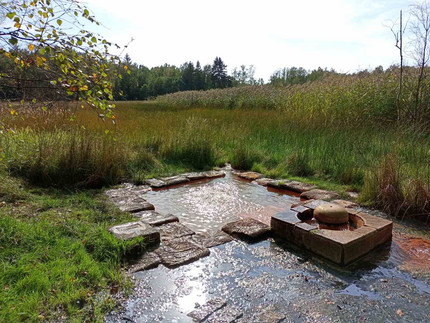Monitoring Carbon from the deep Earth
Gas components found in natural degassing vents give insights to the origin, migration, and accumulation of fluids at depths. The gas composition provides information on the seismic, volcanic, and geothermal activity at a given site. Widespread geogenic degassing takes place in western Eger Rift (Czech Republic). Gas discharges have CO2 as the dominant gas species, with the isotope signatures indicating an origin of helium and CO2 predominantly in the subcontinental mantle. Seismic activity, associated with mantle fluid ascent, is also found at the area. Within the Monitoring Carbon (MoCa) project, we aim to determine and differentiate the sources and sinks of the C-species, including CH4 and light hydrocarbons for the first time. As a novelty, an experiment will be performed at the Hartoušov Mofette (Cheb Basin), where 3 drillings of different depths and a natural mofette are located. This setting will be used to understand geogenic variations in carbon along the ascent pathway to the surface.
Monitoring Carbon (MoCa)
DFG project - DA 2536/1-1
in collaboration with: M. Wilke & M. Timmerman & A. Musiol & C. Fischer & C. Guenter (UP); S. Niedermann & A. Vieth-Hillebrand & M. Zimmer & H. Woith & T. Dahm (GFZ), F Grassa & W. D'Alessandro (INGV-Pa - Italien); T. Fischer & J. Vlcek (Charles University & Tschechische Akademie der Wissenschaft)

